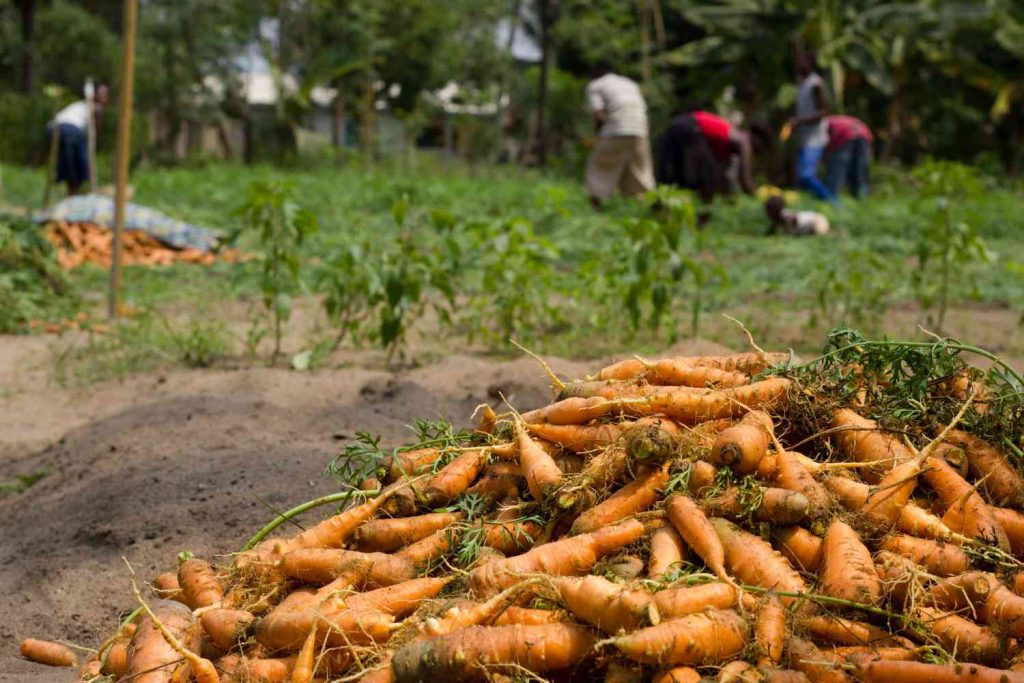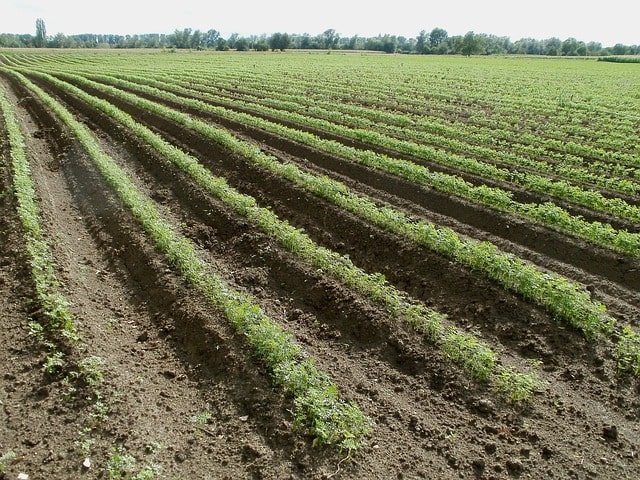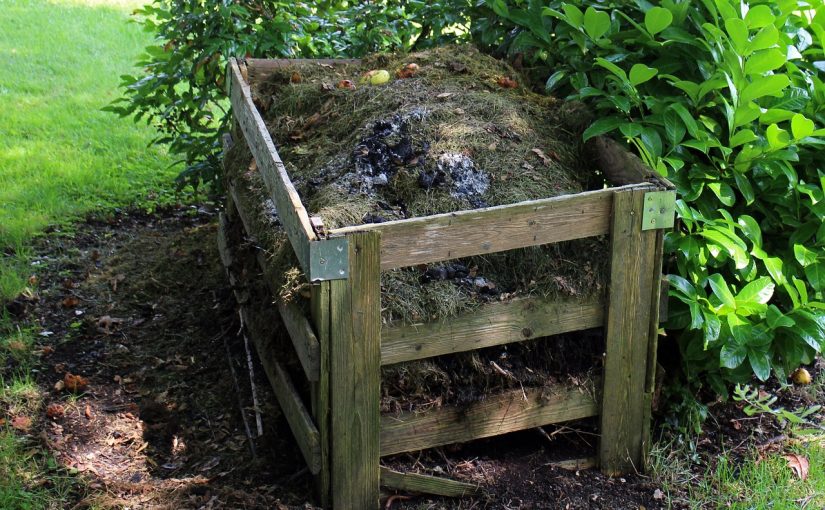Carrot is one among the popular root vegetables and can be grown easily in your backyard. It needs well-drained and fertile soil with 8 hours of sunlight. It takes about 70-80 days to grow carrot at home. Regular inspection is needed to avoid pests and diseases.
If you can grow carrots in the garden, you will get the best of the varieties, full of flavor and texture! Carrots are very popular, loved, long-lasting vegetables. And you can grow them in almost any climate. Here is everything about carrot farming methods, planting growing, and harvesting.
You can grow carrots pretty easily if you can use loose, sandy soil during cold days of the growing season – fall and spring, and carrots can tolerate frost as well. Depending on the local conditions and variety, carrots may take two to four months for proper growth. Plant them in summer and spring and harvest them continuously through the fall!
Why is the Type of Soil Very Important?

It is massively important to choose the most suitable soil for profitable carrot farming. If the roots of the carrot don’t grow easily, you may end up getting misshaped crops – of course, the last thing you would want!
Here is how to prepare the soil for carrot farming:
- Till down 12 inches and remove all the stones, rocks, and even the clumps of soils – ensuring the soil is very smooth and sandy.
- Don’t amend the soil with material rich in nitrogen like manure and fertilizer, which can disrupt the healthy growth of carrot roots. Working in cold coffee grounds is a great idea.
- If there are a lot of clay or rocks in the ground, you should think about planting carrots in a raised bed with 12 inches deep trenches filled with airy, loamy soil.
Climate Requirement for Carrot Farming:
Cold weather is ideal for growing carrots but does well in warm climates too.
The optimum temperature for healthy growth is 16 degrees Celsius to 20 degrees Celsius, while temperature more than 28 degrees can drastically affect the production. Temperatures below 16 degrees Celsius may affect the natural colour of carrots, and may even lead to slender roots, while there are shorter and thicker roots in warm climates.
The temperature range of 15 degrees Celsius to 20 degrees. Celsius is very, very good for growing carrots, as you will get attractive roots with decent colour and quality.
Planting Dates for Carrots
Fall Carrots Planting:
Usually, the first frost occurs at the end of September in the USA
- For carrot harvesting in summer, you should sow the carrot seeds outdoors three to five weeks before the end of spring frost.
- To ensure productive carrot harvesting, you should plant a fresh round of seeds every three weeks continuously through the spring.
- If you want to harvest carrots during fall, ensure sowing seeds in mid to late summer. Start approx ten weeks before the first fall frost.
Choosing the right planting site
- Location with proper, direct sunlight is the best site for carrot farming, though they survive in partial shade as well.
- As already discussed, you should opt for loose, loamy or sandy, airy soil, so that the roots can easily go through the soil.
Propagation of Carrots
Propagation of carrots is done using the seeds. Depending on the variety, the seeds that are broadcast or sowing in the filed with a seed rate of 5 to 6 kg/ha or 6 to 9 kg/ha.
Seeds are smaller in size and count approx. 800 per gram. And they remain lively for as many as three years with up to 80% chances of germination. However, the germination may be inadequate in some local varieties.
Therefore, you should not forget to get a rough calculation of germination percentage while calculating the requirement of seeds.
For best results, procuring clean, healthy and viable seeds from a reliable source is very important. Usually, the carrot seeds take up to 7 to 20 days to germinate properly.
The atmospheric temperature of 20 to 30 degrees Celsius is ideal for seed germination (different from the growth of carrots).
Also Read: Sweet Potato Farming Information Guide
How to Plant Carrots?
Carrot planting from seeds is the best option, instead od transplanting. It would be best if you sowed the seeds directly in the field, keeping in mind that they don’t like any disturbance whatsoever.
Sow the seeds 2 to 3 inches apart in rows, ¼ inch deep, and 1 foot apart.
A useful TIP: Ensure distributing seeds equally so that they don’t grow together at the same place. You can use a seed-sower for proper distribution.
Again, maintain enough moisture in the soil with frequent shallow watering. Small carrot seeds don’t like hard crusts or lumps for their growth. Covering the seeds with fine compost or vermiculite is also a decent idea to prevent the formation of crusts.
You can check the moisture by putting a finger in the ground – the soil should be moist, but not wet.
At times, carrots germinate very slowly, and it may take two to three weeks to show any sign of life. So, being patience is also very important. If you have maintained the right carrot planting distance, there are very high chances of timely, healthy and productive germination.
Tip: You can add radish seeds to carrot seeds to track the growth of carrots. As radish grow quickly, you can harvest them, and the carrots will also start to grow.
Fertilization Management in Carrot Farming:
You should choose the fertilizers after proper analysis of the soil.
Farm Yard Manure with the distribution rate of 30 tonnes per hectare is recommended at final ploughing with a dosage of 40 to 60 kg nitrogen, 90 to 110 kg potassium, and 25 to 50 kg phosphorus for every hectare.
Add about three tons of farmyard manure while preparing the land, mixed with 40 kg phosphorus, 50 kg nitrogen, and 50 kg potash for each hectare.
Add a full dose of phosphorus and potassium, and half the dose of nitrogen before sowing the seeds. You should add the remaining nitrogen at the 56th week of germination.
Carrots love feeding on potassium, deficiency of which can severely affect the roots as well as the overall metabolism of the plants. Carrots with low potassium quantity are not good to taste and don’t last long too.
Irrigation Management for Carrot Crops
The first carrot farming irrigation should be light, and you should do it immediately after sowing. Carry out the subsequent irrigations as per requirement.
As discussed, too much moisture is not ideal for carrot crops, and you may end up getting light-coloured, short carrots with a larger diameter. Types of soil, season, and variety of carrots play key roles in deciding the requirement of irrigation.

Usually, irrigation in every 5 to 6 days in summer and 10 to 15 days in winter is ideal for adequate moisture for the carrot crop.
Only occasional irrigation is needed during the rainy season. It would help if you avoided water stress around the roots, especially while they grow, to prevent from cracking.
Carrot Care Tip
While Carrots Are Growing
- Mulching carrots gently is a decent option to maintain moisture, speed-up the germination, and stop direct sunlight to the roots.
- When seedlings are of one-inch height, they will usually stand 3 to 4 inches apart. You should trim the tops with a farming scissor instead of plucking them to avoid certain damage to the fragile roots.
- One-inch water every week is recommended in the beginning, then two inches with the growth of roots.
- Weeding is an important aspect of carrot planting care, but ensure you don’t disturb the young roots while doing so.
- Fertilizer with low-nitrogen quantity but high potassium and phosphate after 5 to 6 weeks of sowing is recommended. Excess nitrogen in fertilizer works on the top of carrot plants, not on the roots.
Managing Pests and Diseases
There are some common pests and diseases associated with carrot planting. They are:
- Black (Itersonilia) canker
- Flea Beetles
- Carrot rust flies
- Root-knot nematodes
- Wireworms, and
- Aster Yellow Disease:Causes discoloured and shortened carrot tops with hairy roots. You can invest in a control plant to control the pests like leafhoppers.
Carrot Harvest and Storage:
Harvesting
- Small-sized carrots taste best, so you should prefer carrot harvesting when they are still young.
- You can decide to harvest, depending on your priority. Carrots with the width of a thumb or at least ½ inch of diameter are very good for harvesting.
- Suppose you are planting carrots in the early summer or spring. In that case, harvesting before the arrival of hot days is the best idea, as carrots may get fibrous under high atmospheric temperature.
- Harvesting carrots after one or more frosts are linked with better taste, as the plants store more energy (sugars) in the roots for later usage.
- You can also preserve the carrots after first frosts by covering the 18-inch layer of shredded leaves for late carrot harvesting.
FYI, Carrots are biennial crops. If you don’t harvest due to some reason, the tops will start flowering and producing seeds after the first year.
Storage
Once the carrot harvest season is at its end, storage is the next big task.
- Twist or cut the ½ inch off the tops of carrots to store them fresh.
- Don’t forget to remove any dirt under cold, running water, and dry in the air.
- Refrigerate only after sealing them in airtight plastic bags; otherwise, they will get limped within a few hours.
- For temporary carrot storage, you can leave the mature ones in the soil, if there are not freezing or pest’s problem with the soil.
- Tubs, sand, dry sawdust with the cool, dry atmosphere are also some other options for storage.
Recommended Varieties
There are plenty of different carrot varieties. They are of rainbow colors, shapes, and sizes!
- Bolero: 7 to 8 inches, slightly tapered, resists most leaf pests as well as blights.
- Danvers: One of the classic heirloom carrot varieties, tapered at the end, and has a dark, rich orange color, suitable for heavy soil.
- Little Finger: Another heirloom variety, looks like Nantes as they grow only 4 inches long, and one inch thick; one of the best varieties for storage.
- Nantes: Cylindrical, 6 to 7 inches tall, sweetest of them all; with a crisp texture.
- Napoli: One of the first-rate sub-types of Nantes variety, grown in spring, known for bright orange roots, mild, juicy, crunchy, and fine texture.
Some common varieties of UK carrot:
Altrincham: Long and slender roots with good flavour. The neck is purple, where it is exposed to sunlight.
Amsterdam Forcing: Bouncing, small, finger carrot.
Autumn King: One of the most common commercial carrots, flaky type, with strong tops and heavy yields. A true winter carrot, which is fairly colourful and smooth.
Baby Bell: Small, tender type, matures earlier than most of the other varieties.
Belgian White: Large roots with white skin, very popular in Belgium as well as France.
Crusader: One of the Nantes types, good colour, smooth skin, ready to harvest in autumn, summer and late spring.
Wit and Wisdom
- There are so many different colors of carrot, including orange, purple, red, and white, and only some of them are resistant to pests and diseases.
- Long-lasting carrots contain a rich quantity of sugar and are a very good source of carotene and vitamins.
- Carrot is also called as “underground honey” in Ireland due to its sweetness.
- FYI, carrots are the first vegetables to be commercially canned.
That’s all about our guide on “how to do carrot farming”.If you are planning to start carrot farming, we would suggest you go ahead. It’s easier; it’s full of fun, and very, very productive too.
Hopefully, you liked it, and you are not better prepared to start your own carrot farming. Do write to us if you have found it helpful, or if you have some questions. Share the guide with your friends who are interested in carrot farming.
References:
https://www.almanac.com/plant/carrots
https://agricultureguruji.com/carrot-farming/



